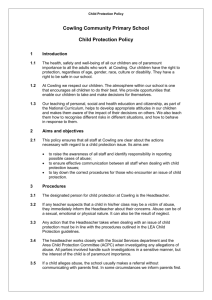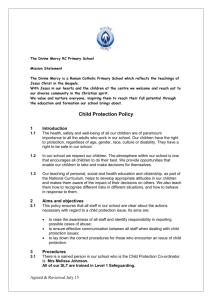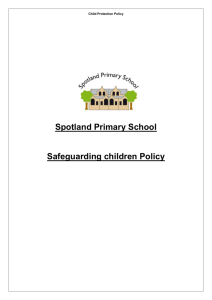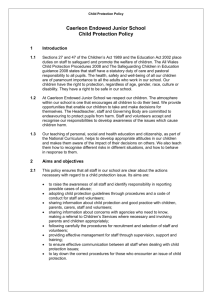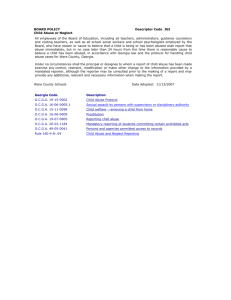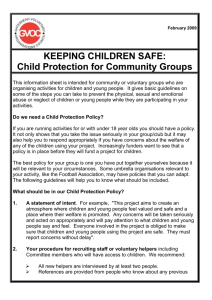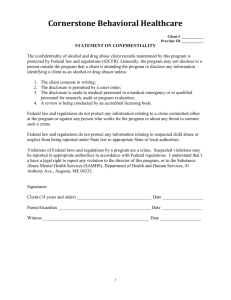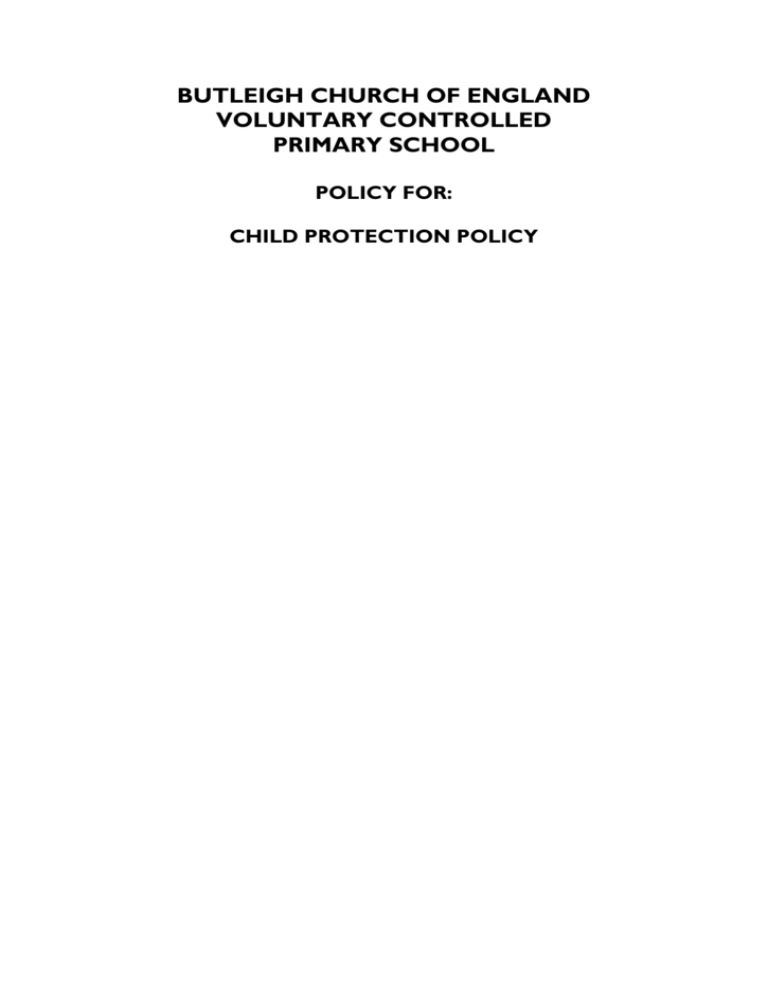
BUTLEIGH CHURCH OF ENGLAND
VOLUNTARY CONTROLLED
PRIMARY SCHOOL
POLICY FOR:
CHILD PROTECTION POLICY
1
Introduction
1.1 The health, safety and well-being of all our children are of paramount
importance to all the adults who work in our school. Our children have the
right to protection, regardless of age, gender, race, culture or disability. They
have a right to be safe in our school.
1.2 In our school we respect our children. The atmosphere within our school is
one that encourages all children to do their best. We provide opportunities
that enable our children to take and make decisions for themselves.
1.3 Our teaching of personal, social and health education and citizenship, as part of
the National Curriculum, helps to develop appropriate attitudes in our children
and makes them aware of the impact of their decisions on others. We also
teach them how to recognise different risks in different situations, and how to
behave in response to them.
2
Aims and Objectives
This policy ensures that all staff in our school are clear about the actions
necessary with regard to a child protection issue. Its aims are:
3
to raise the awareness of all staff and identify responsibility in reporting
possible cases of abuse;
to ensure effective communication between all staff when dealing with
child protection issues;
to lay down the correct procedures for those who encounter an issue of
child protection.
Procedures
3.1 There is a named person in our school who is the Child Protection Coordinator. This is currently and normally the Headteacher but he may delegate
this responsibility in some circumstances.
3.2 If any teacher suspects that a child in his/her class may be a victim of abuse,
they immediately inform the named person about their concerns. Abuse can be
of a sexual, emotional or physical nature. It can also be the result of neglect.
3.2.1 Staff and adults are well placed to notice possible signs of abuse in
children, because of their regular contact. Signs of abuse may be:
obvious and sudden, for example an injury;
or part of a picture over a longer period, perhaps including:
behaviour which is unusual for the child or its age;
work falling off or lack of interest;
isolation or introversion.
Alternatively you may become concerned:
when a child tells you about ill-treatment which has happened to
him or her, or to a friend, brother or sister; or when an adult
claims that a child has been mistreated.
If an allegation is made by a child:
listen calmly without direct questioning or stopping the child;
let them tell you what they want and no more, as further probing
may interfere with later investigation;
treat the matter seriously, with belief and reassure the child as
necessary;
when the child has finished, make sure they feel secure and explain
what you are going to do next;
make it clear that you will have to inform others;
make notes afterwards including date and time of disclosure and
sign this;
report to Headteacher;
keep a careful watch on the child.
There are things you should not do:
do not promise to keep the matter secret;
do no contact parents; this is the job of the Social Services;
do not interrogate children or ask leading questions;
do not speak with anyone about whom allegations are made, even if
the allegations are about a colleague or another adult;
do not ask the child to ‘demonstrate’ the abuse.
3.4 Any action that the named person takes when dealing with an issue of child
protection must be in line with the procedures outlined in the LEA Child
Protection guidelines.
3.5 The school’s named co-ordinator works closely with the Social Services
department when investigating any allegations of abuse. All parties involved
handle such investigations in a sensitive manner, but the interest of the child is
of paramount importance.
3.6 If a child alleges abuse, the school usually makes a referral without
communicating with parents first. In some circumstances we inform parents
first.
3.7 If a child protection referral is made, a case conference is held. The case
conference offers the opportunity to share information and formulate a plan of
action. Staff are expected to attend and participate in all case conferences and
meetings held under the LEA guidelines.
3.8 We regard all information relating to individual child protection issues as
confidential, and we treat this accordingly. We only pass information on to
appropriate persons. We inform the child at all stages of who is involved, and
what information we have given them.
3.9 We require all adults employed in school to have their application vetted
through police records in order to ensure that there is no evidence of offences
involving children or abuse. This is processed through the Disclosure
Procedure
3.10 There may be extremely rare occasions when adults in our school, in the
course of their duty, use physical intervention to restrain children. The
Headteacher requires the adult involved in any such incident to report this to
him/her immediately, and to record it in the incident book.
4
Monitoring and Review
The Headteacher regularly reviews any incidents detailed in the incident book.
This review is reported to the Governing Body.


